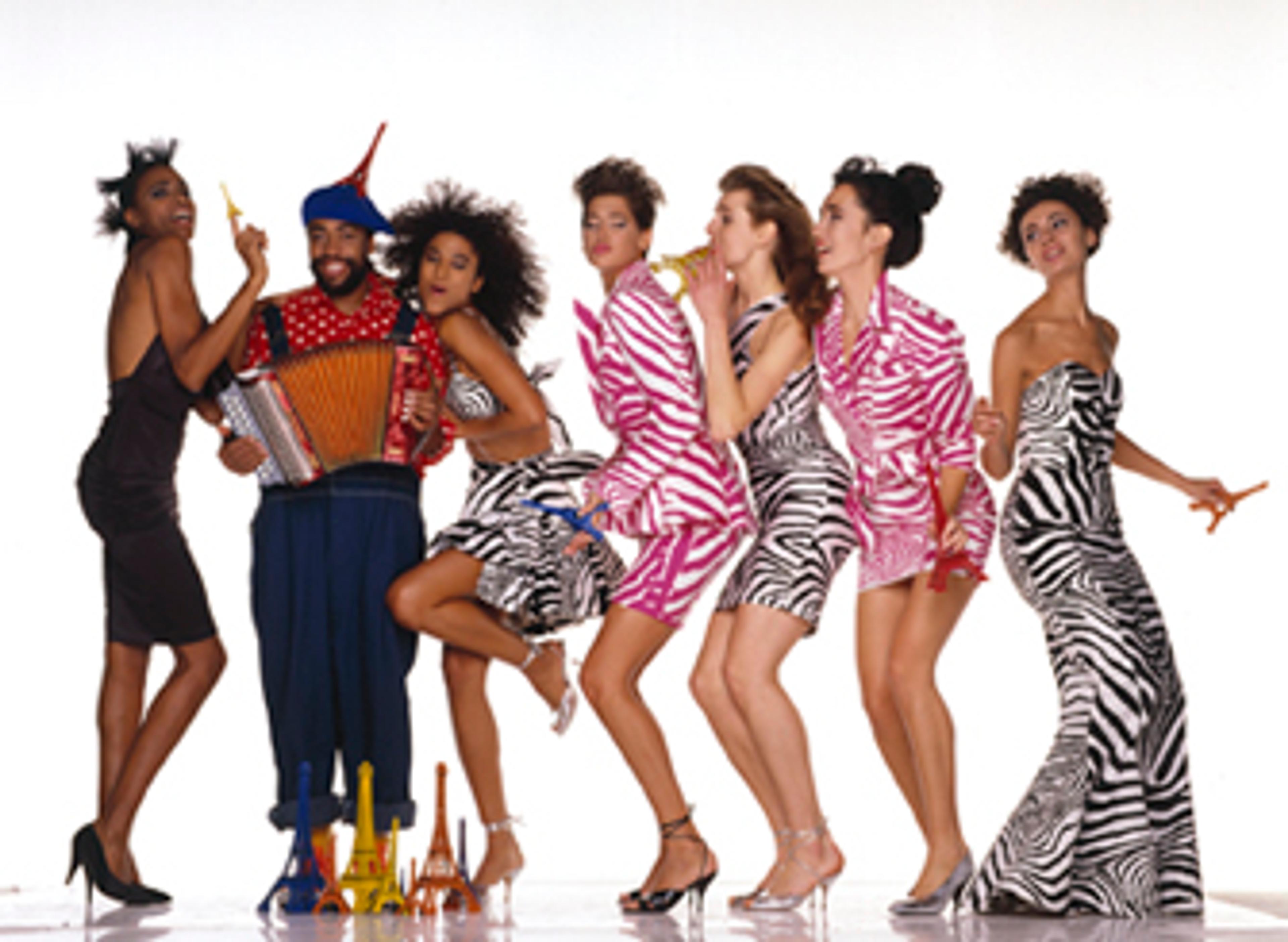Patrick Kelly: A Retrospective

In the 1980s the young African American fashion designer Patrick Kelly took Paris by storm, becoming the first American member of the Chambre Syndicale du Prêt-à-Porter (the governing body of the prestigious French ready-to-wear industry). The first retrospective of Patrick Kelly’s work includes more than sixty complete ensembles drawn from his estate. Archival material from the estate and numerous objects from Kelly’s personal collection of memorabilia are also featured.
A native of Vicksburg, Mississippi, Patrick Kelly was influenced during his early years by the creativity and fashion sense of his female relatives, who often added embellishments to simple store-bought garments, as well as by the fashion magazines his grandmother brought home from the white household where she worked as a domestic. As a young adult, Kelly moved to Atlanta, where he sold recycled clothes and worked without pay as a window dresser at the Yves Saint Laurent Rive Gauche Boutique. He later lived in New York, where he attended Parsons School of Design.
It was in Paris, during the mid- to late 1980s that Kelly found his greatest success. He began by selling dresses on the street and working as a costumer for the nightclub Le Palais. His flamboyant garments became popular, and he soon gained the attention of the clothing conglomerate Warnaco. Such well-known stores as Henri Bendel, Bloomingdale’s, and Bergdorf Goodman carried his Paris designs, and celebrities Cicely Tyson, Bette Davis, Grace Jones, and Isabella Rosellini were among his clients.
Some of Kelly’s most memorable garments incorporated masses of multicolored buttons or grosgrain ribbons clustered together. Other motifs, like the use of hats and splashy accessories, celebrated his rural southern roots. Kelly also created works using controversial images drawn from popular culture, bringing issues of racial stereotyping to the forefront.
Although he produced collections only from 1985 until his death from AIDS in 1990 at the age of 35, his exuberant, witty garments proved to be potent and original contributions to the field of fashion.
Patrick Kelly: A Retrospective is organized by guest curator Thelma Golden, Deputy Director for Exhibitions and Programs at The Studio Museum in Harlem.
The exhibition is made possible in part by the Brooklyn Museum’s Richard and Barbara Debs Exhibition Fund, Eileen Harris Norton, the Peter Norton Family Foundation, Trish McEvoy, Daffy’s Inc., Linda Johnson Rice, Carol Sutton Lewis, and other members of the Leadership Circle.
Organizing department
Costumes and Textiles